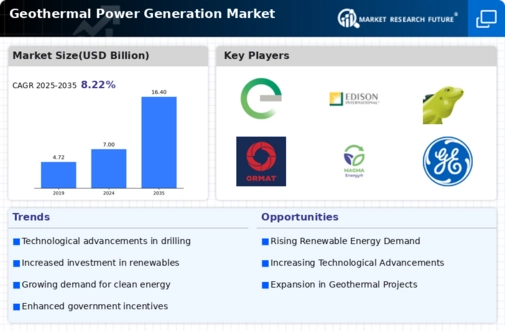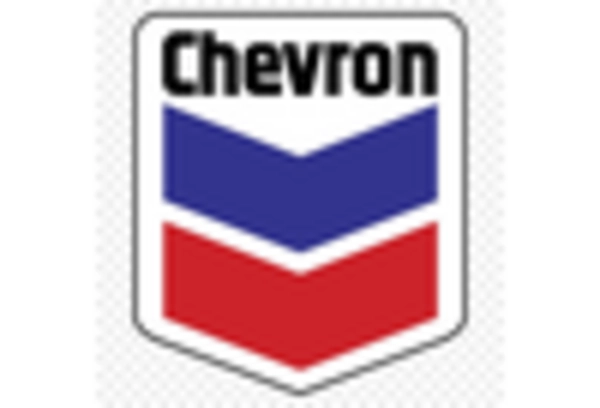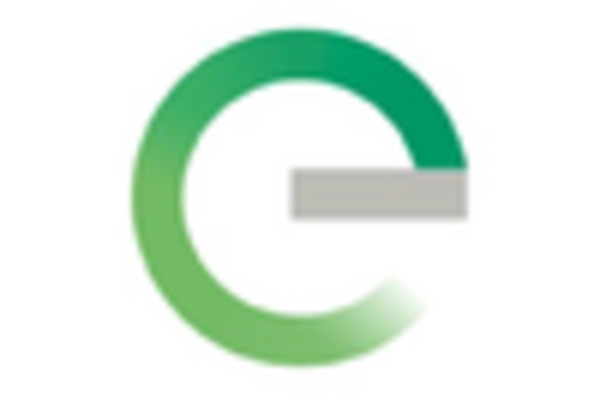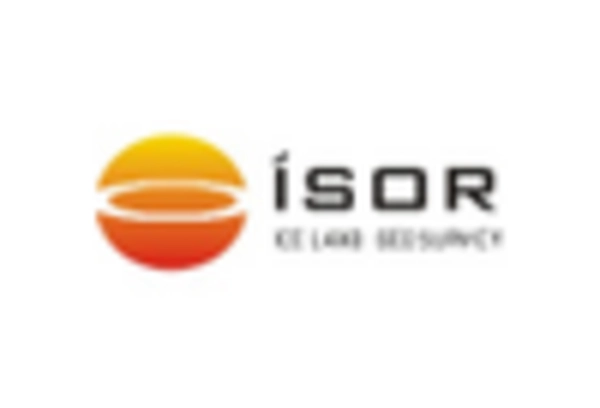Technological Innovations
Technological advancements are significantly influencing the Geothermal Power Generation Market. Innovations in drilling techniques, such as enhanced geothermal systems, have improved the efficiency and feasibility of geothermal projects. For instance, the development of advanced drilling technologies has reduced costs and increased the depth at which geothermal resources can be accessed. In 2023, the average cost of geothermal energy production decreased by approximately 10 percent due to these innovations. Additionally, the integration of digital technologies, such as data analytics and remote monitoring, has optimized the operational efficiency of geothermal plants. These technological improvements not only enhance the performance of existing geothermal facilities but also make new projects more attractive to investors, thereby stimulating growth in the Geothermal Power Generation Market.
Energy Security and Reliability
Energy security remains a critical concern for many nations, and geothermal energy offers a reliable solution within the Geothermal Power Generation Market. Unlike solar and wind energy, which are subject to fluctuations, geothermal energy provides a stable and continuous power supply. In 2023, geothermal plants operated at capacity factors exceeding 90 percent, demonstrating their reliability. This characteristic is particularly appealing to countries aiming to diversify their energy portfolios and reduce dependence on imported fossil fuels. As energy security becomes increasingly paramount, the Geothermal Power Generation Market is expected to attract investments and policy support aimed at expanding geothermal capacity. The potential for geothermal energy to contribute to a stable energy future is likely to drive its adoption in various regions.
Government Incentives and Support
Government policies and incentives are pivotal in shaping the Geothermal Power Generation Market. Many countries have implemented favorable policies to promote renewable energy, including tax credits, grants, and feed-in tariffs specifically for geothermal projects. In 2023, several nations reported an increase in funding for geothermal energy initiatives, with investments reaching over 1 billion dollars. This financial support encourages private sector participation and reduces the financial risks associated with geothermal development. Furthermore, regulatory frameworks that streamline the permitting process for geothermal projects are enhancing the attractiveness of this energy source. As governments continue to prioritize energy security and sustainability, the Geothermal Power Generation Market is poised for substantial growth.
Rising Demand for Renewable Energy
The increasing The Geothermal Power Generation Industry. As nations strive to meet their climate goals, the demand for clean energy alternatives has surged. In 2023, renewable energy accounted for approximately 30 percent of the total energy generation mix, with geothermal energy playing a crucial role. This trend is expected to continue, as governments and private sectors invest in sustainable energy solutions. The Geothermal Power Generation Market is likely to benefit from this shift, as it offers a reliable and consistent energy source, unlike some other renewables that are intermittent. Furthermore, the growing awareness of the environmental impacts of fossil fuels is propelling the transition towards geothermal energy, which is perceived as a cleaner alternative.
Growing Awareness of Environmental Sustainability
The rising awareness of environmental sustainability is driving interest in the Geothermal Power Generation Market. As climate change concerns escalate, stakeholders are increasingly recognizing the need for sustainable energy solutions. Geothermal energy is often viewed as a low-impact alternative to fossil fuels, with a significantly lower carbon footprint. In 2023, studies indicated that geothermal power generation emits up to 97 percent less carbon dioxide compared to traditional energy sources. This environmental advantage is appealing to both consumers and businesses seeking to enhance their sustainability profiles. Consequently, the Geothermal Power Generation Market is likely to experience heightened demand as organizations and individuals prioritize eco-friendly energy options.

















Leave a Comment